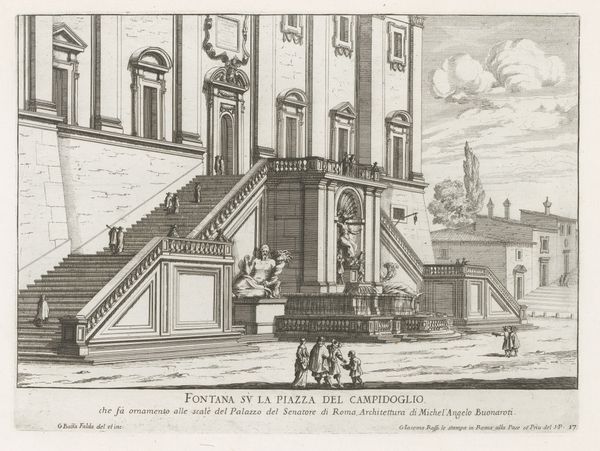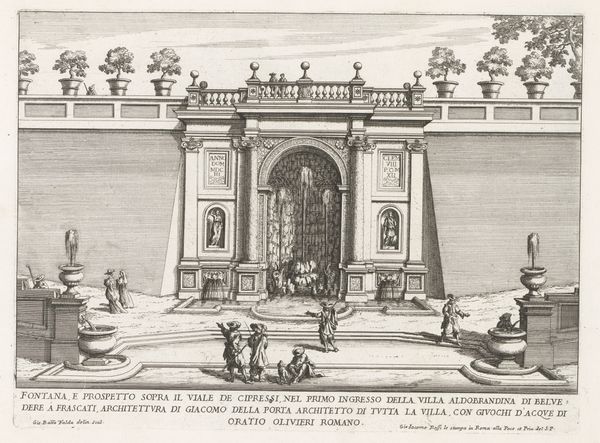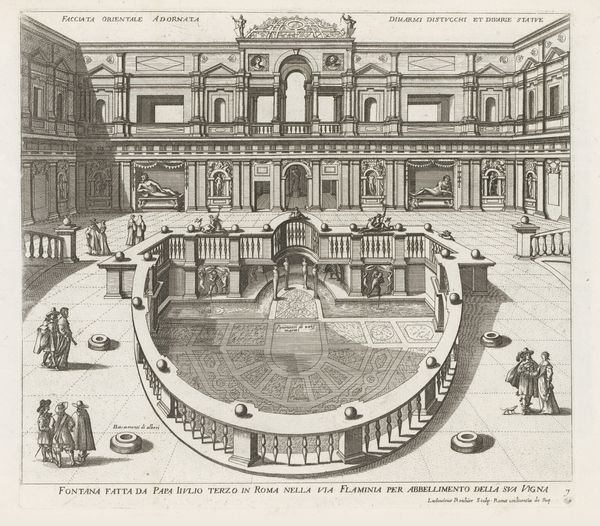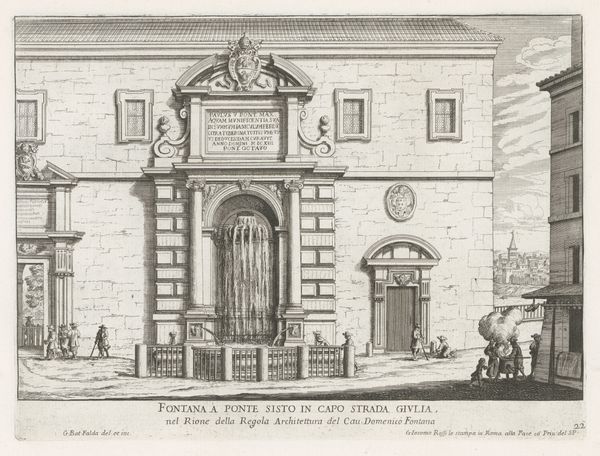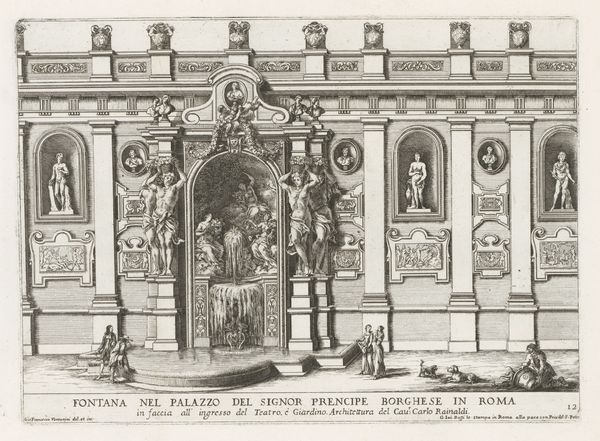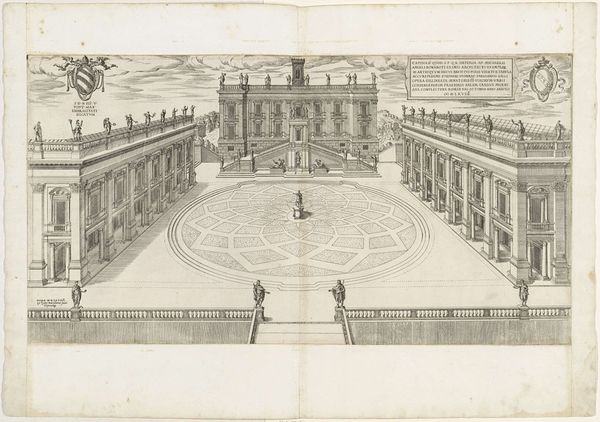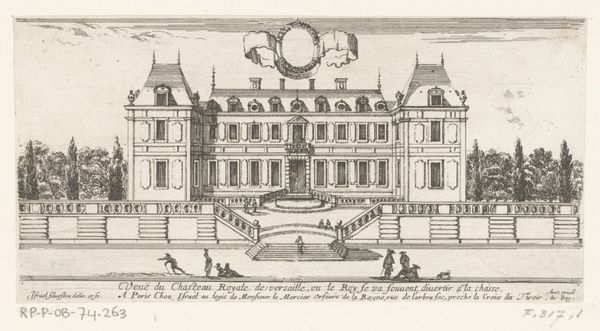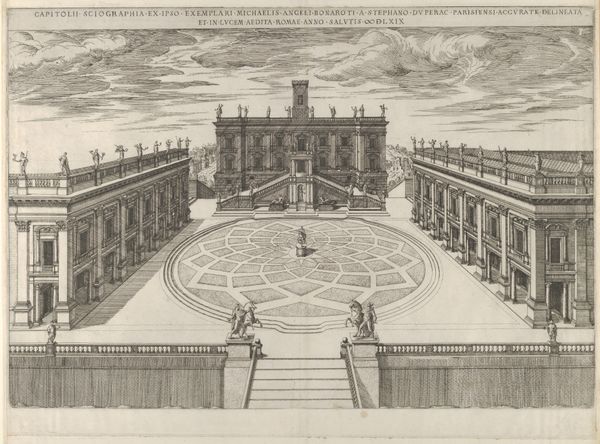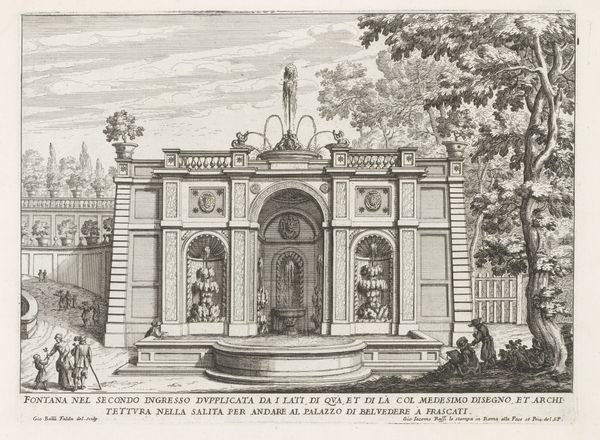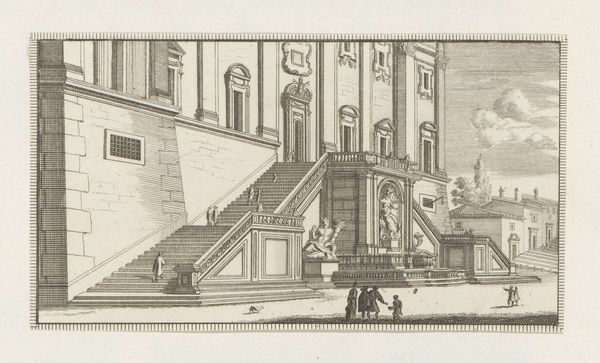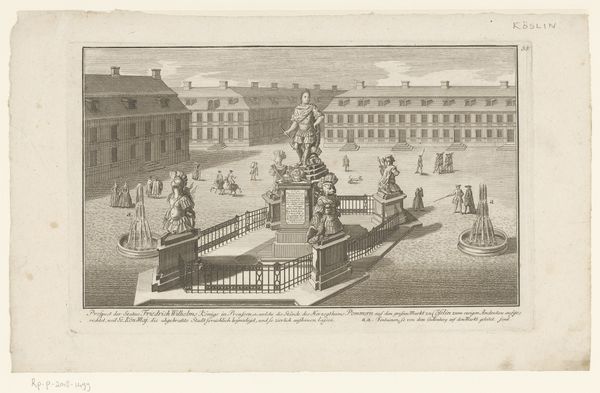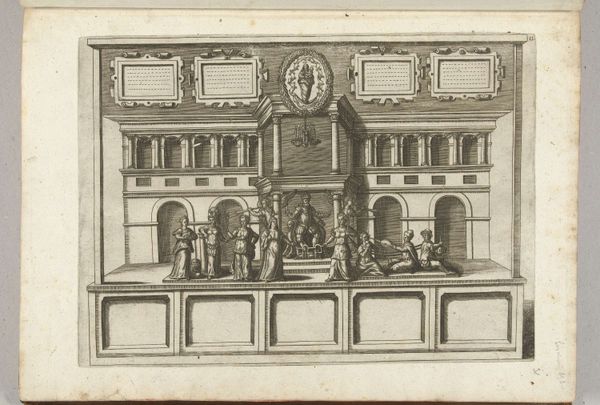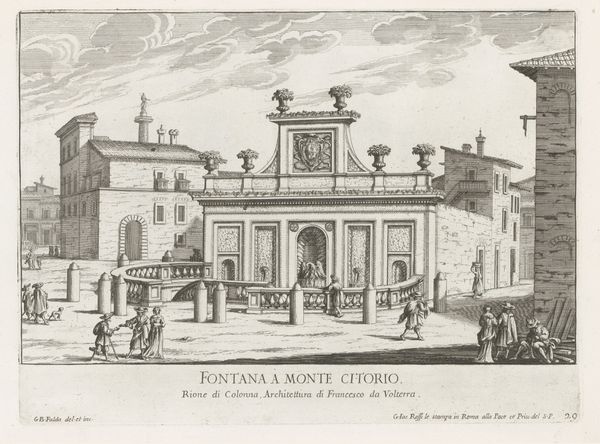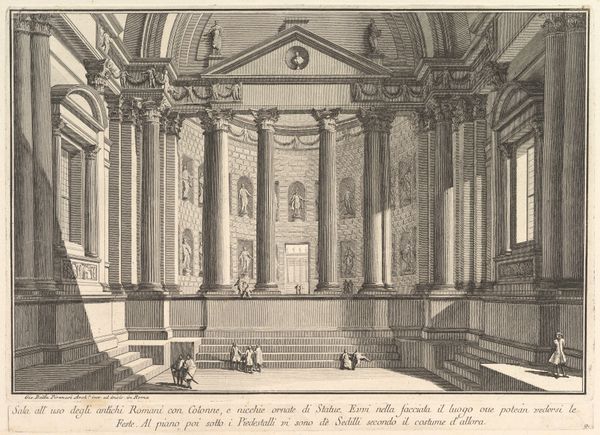
print, engraving, architecture
#
baroque
# print
#
landscape
#
perspective
#
form
#
line
#
cityscape
#
italian-renaissance
#
engraving
#
architecture
Dimensions: height 226 mm, width 339 mm
Copyright: Rijks Museum: Open Domain
Editor: This engraving, "Tuinzijde van de Villa d'Este te Tivoli," was created by Giovanni Francesco Venturini between 1653 and 1691. It's incredibly detailed! The way the artist captures the architecture and garden layout is so precise. What strikes me is how staged everything appears – very theatrical. What do you see in this piece? Curator: Indeed! The theatricality you perceive is key. Consider the symbolism embedded in the image: the fountains, the statuary, the very architecture itself. They are all signifiers of power, wealth, and classical learning – vital elements for the elite during the Italian Renaissance and continuing into the Baroque. Does the garden's layout remind you of anything? Editor: Now that you mention it, the way the stairs and terraces are arranged… almost like a stage set? And those statues feel like actors posed just so. Curator: Precisely! Think of the garden as a microcosm, a stage upon which the owner could enact their dominion over nature and display their refined taste. Even the water, channeled and controlled, symbolizes mastery. Notice how the perspective leads your eye toward the building, emphasizing its imposing presence. The garden isn't merely a pleasant space; it's a deliberate performance. Are there elements from prior visual cultures visible here? Editor: Yes, it does harken back to Roman garden design with all the sculpture! But also the attention to nature and geometry makes me think of sacred spaces, like the Garden of Eden. Curator: Absolutely, we see an effort to recapture paradise through order and control. What do you make of the figures within this performance? Editor: I think that’s why it feels “staged”. They are there to accent the wealth of this scene by just "being" in it! Curator: And do you notice what these characters *aren't* doing, their relationship with each other and their surroundings? It gives a subtle insight to both this space, and a window into understanding of culture during this time. Editor: I hadn't thought about the level of control conveyed in the garden, and the performance it facilitates. Thanks for that perspective. Curator: My pleasure! By examining the symbolic language within the image, we gain insight into the values and aspirations of the culture that created it.
Comments
No comments
Be the first to comment and join the conversation on the ultimate creative platform.
